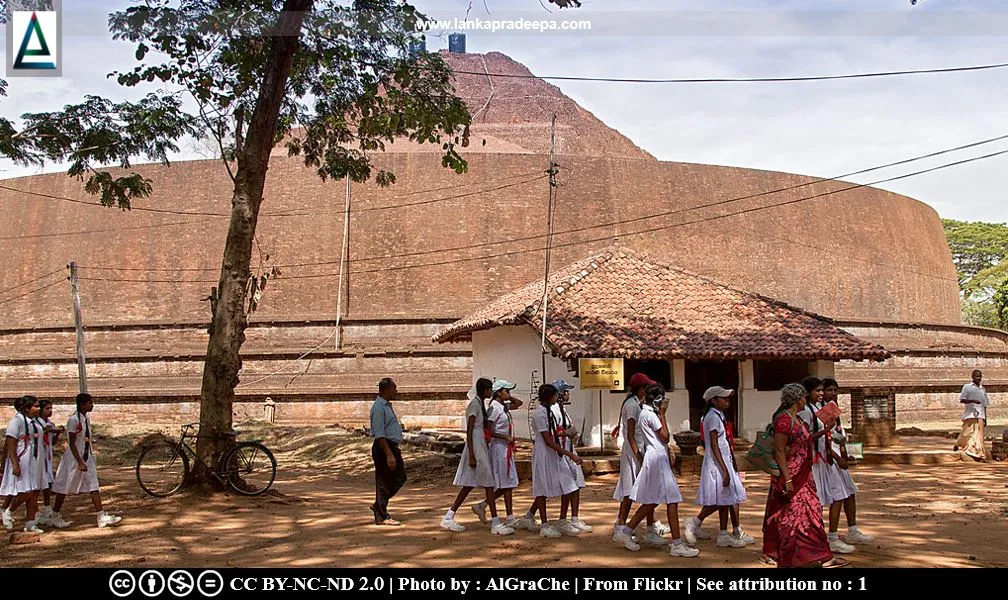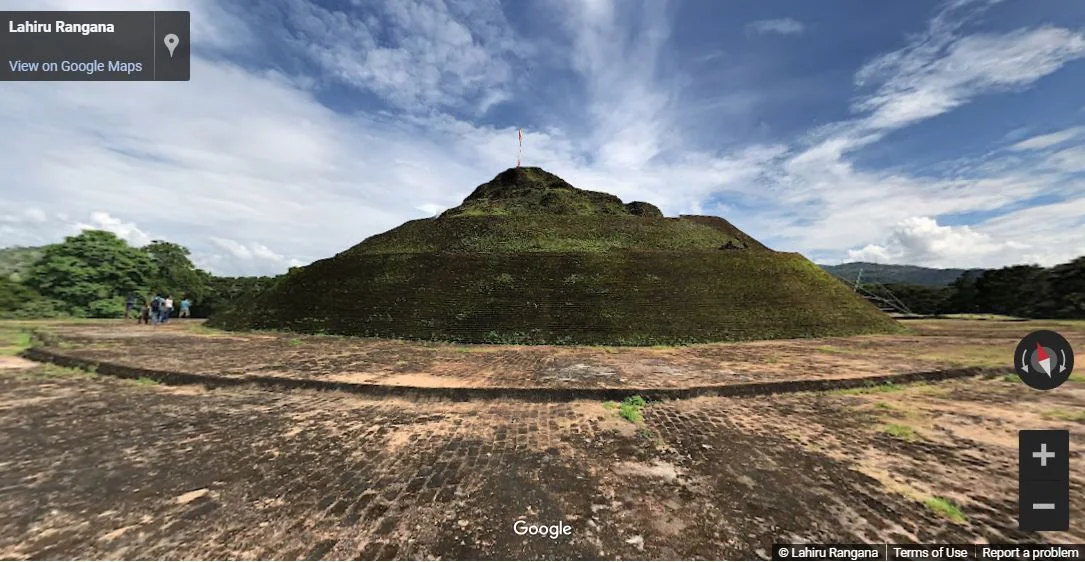
Yudaganawa (Sinhala: යුධගනාව) is a Buddhist temple with a colossal Stupa situated in Monaragala District, Sri Lanka. The ruined Chulangani Viharaya site is located near this Stupa.
History
Yudaganawa is thought to be the place where the battle between the two brothers, Prince Abhaya (Dutugemunu, reigned: 161-137 B.C.) and Prince Tissa (Saddhatissa, reigned: 137-119 B.C.) occurred in about 170 B.C. after the death of their father Kavantissa (Kularathna et al., 2011; Nicholas, 1963; Uduwara, 1990). In the Sinhala language, the name Yudaganawa can be broken into two words "Yuda" (meaning war), and "Anganaya" (meaning arena). Sri Lankan chronicles such as Mahavamsa record Culanganiyapitthi (or Yudaganapitiya) as the battlefield of the two princes and that place is popularly identified with present Yudaganawa (Nicholas, 1963). However, Mahavamsa does not refer to the erection of a Stupa at this site during the pre-Christian era (Uduwara, 1990).
The colossal Stupa at the present site resembles architectural similarities to the Demalamahaseya at Polonnaruwa and Suthighara Stupa at Dedigama (Uduwara, 1990). Scholars such as S. Paranavithana have identified this Stupa with the Ratnavali Cetiya built by King Parakramabahu I (1153-1186 A.D.) in memory of his mother (Nicholas, 1961; Uduwara, 1990).
Although the period to which the Stupa belonged is not clearly identified, an image house of the Kandyan Period is found near the Stupa.
The Stupa
Yudaganawa Stupa is considered the biggest ancient monument found in the Uva Province as well as one of the largest Stupas in the country (Kularathna et al., 2011). It rises to a height of about 13 m (42.65 ft.; the height of new brickwork) and has a diameter of about 91.2 m [(299.21 ft.) Kularathna et al., 2011]. The stupa was found in ruins and grown with vegetation until it has been preserved by subsequent restoration efforts in the recent past (Kularathna et al., 2011). However, it is not standing at its original height well-matched with the circumference at its base (Kularathna et al., 2011).
Conservation
The first conservation and restoration works on the Stupa were initiated in the 1970s and again in the 1990s (Kularathna et al., 2011). The conservation work was continued again in 2003 by the Archeological Department (Kularathna et al., 2011).

Yudaganawa, the upper part of the Stupa (Photo credit: Lahiru Rangana, Google Street View)
.Attribution
References
1) Kularathna, S., Siriwardhana, D., Sudharshana, N. and Lewangamage, C.S., 2011. Rehabilitation of Yudaganawa Dagoba in Buttala, Sri Lanka. International Conference on Structural Engineering Construction and Management. Department of Civil Engineering. University of Moratuwa.
2) Nicholas, C. W., 1961. Additions and amendments to the Historical topography of ancient and medieval
Ceylon. Journal of the Ceylon Branch of the Royal Asiatic Society, New
Series (Vol VII. Part 2). Royal Asiatic Society (Ceylon
Branch). p.226.
3) Nicholas, C. W., 1963. Historical topography of ancient and medieval Ceylon. Journal of the Ceylon Branch of the Royal Asiatic Society, New Series (Vol VI). Special Number: Colombo. Royal Asiatic Society (Ceylon Branch). p.53.
4) Uduwara, J., 1990. Section V: History of the Department of Archaeology: 1970-1990. (Editor in chief: Wijesekara, N.) Archaeological Department Centenary (1890-1990): History of the Department of Archaeology (Vol. 1). Commissioner of Archaeology. p.190.
3) Nicholas, C. W., 1963. Historical topography of ancient and medieval Ceylon. Journal of the Ceylon Branch of the Royal Asiatic Society, New Series (Vol VI). Special Number: Colombo. Royal Asiatic Society (Ceylon Branch). p.53.
4) Uduwara, J., 1990. Section V: History of the Department of Archaeology: 1970-1990. (Editor in chief: Wijesekara, N.) Archaeological Department Centenary (1890-1990): History of the Department of Archaeology (Vol. 1). Commissioner of Archaeology. p.190.
Location Map
This page was last updated on 3 July 2023

